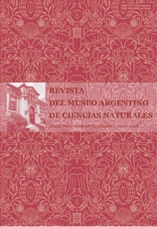Primeros registros de Tyto alba (Scopoli, 1769) (Strigiformes, Aves) en el Pleistoceno Medio-Tardío de la provincia de Buenos Aires (Argentina) y sus implicancias tafonómicas
Resumen
First records of Tyto alba (Scopoli, 1769) (Strigiformes, Aves) from the Middle-Late
Pleistocene of Buenos Aires province (Argentina) and their taphonomic implications. In this paper
a tarsometatarsus, a mandibular fragment and a synsacrum are described and assigned to T. alba. Such material
comes from three localities situated in the southeast and northeast of the Buenos Aires province. Here, we
found exposed sedimentary sequences including the geochronologic interval Early Pleistocene-Holocene
(Ensenadan, Bonaerian, Lujanian and Platan). They represent the first fossil records for this species in Argentina
and the oldest one for South America. We found also direct evidence of trophic associations between a
predator like T. alba and microvertebrates pellets in the Pleistocene of Argentina.
Pleistocene of Buenos Aires province (Argentina) and their taphonomic implications. In this paper
a tarsometatarsus, a mandibular fragment and a synsacrum are described and assigned to T. alba. Such material
comes from three localities situated in the southeast and northeast of the Buenos Aires province. Here, we
found exposed sedimentary sequences including the geochronologic interval Early Pleistocene-Holocene
(Ensenadan, Bonaerian, Lujanian and Platan). They represent the first fossil records for this species in Argentina
and the oldest one for South America. We found also direct evidence of trophic associations between a
predator like T. alba and microvertebrates pellets in the Pleistocene of Argentina.
Texto completo:
PDFEnlaces refback
- No hay ningún enlace refback.

This work is licensed under a Creative Commons Attribution 3.0 License.

